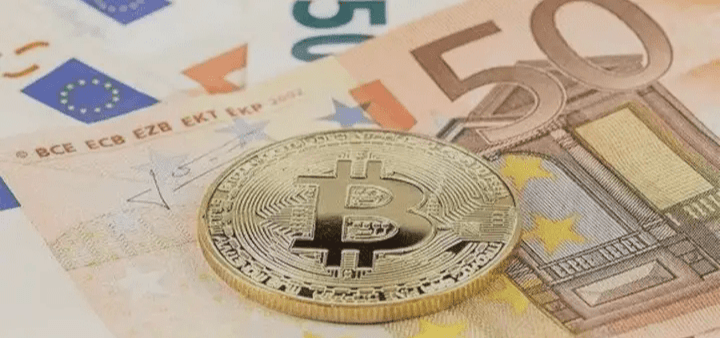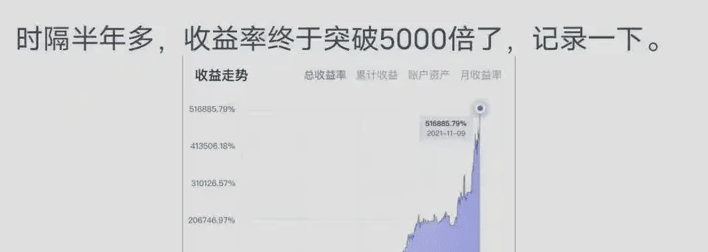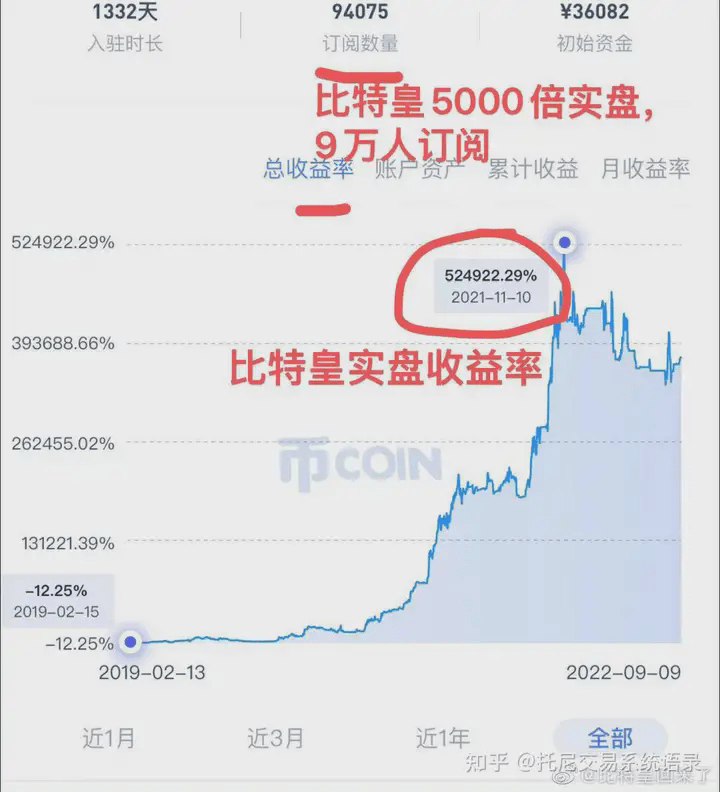In the crypto world, you must find a way to first earn 1 million in capital. From tens of thousands to 1 million, there’s only one way.
That is rolling positions.
When you have 1 million in capital, you will find that your whole life seems different. Even if you don't use leverage, just holding some spot assets will make you profit.
20% would give you 200,000, which is already the ceiling of income for most people in a year.
Moreover, when you can grow from tens of thousands to 100,000, you will also touch on some ideas and logic for making big money. At this point, your mindset will also calm down significantly, and from then on, it’s just about copying and pasting.
Don’t always think about millions or billions; you must start from your actual situation. Bragging only makes one feel good. Trading requires the ability to identify the size of opportunities; you can't always trade lightly or heavily. Usually, trade lightly, and when a big opportunity comes, then pull out the big guns.
Let’s say rolling positions; this is something you can only operate when a big opportunity comes. You can’t keep rolling; it’s okay to miss out because you only need to successfully roll three or four times in your life to go from zero to tens of millions. Tens of millions are enough for an ordinary person to level up.
The ranks of the rich.
A few points to note about rolling positions:
1. Sufficient patience. The profits from rolling positions are enormous; as long as you can roll successfully a few times, you can earn at least tens of millions to hundreds of millions.
So you cannot roll easily; you have to find highly certain opportunities.
2. A highly certain opportunity refers to a sharp drop followed by sideways movement, then a breakout upwards; the probability of trending in this case is high.
Find the right trend reversal point and get on board at the beginning.
3. Only roll long;
▼ Rolling position risks
Let’s talk about rolling positions. Many people think it’s risky, but I can tell you, the risk is very low, far less than the logic of trading futures.
If you only have 50,000, how to start with 50,000? First, this 50,000 should be your profit. If you are still losing, don’t bother looking.
If you open a position at 10,000 for Bitcoin, set the leverage to 10x, and only open 10% of the position, that’s just 5,000 as margin, which is actually equivalent to 1x leverage. If you set a stop loss at 2% and you hit it, you only lose 2%, which is just 200. How do those who get liquidated end up losing everything? Even if you get liquidated, you only lose 5,000, right? How can you lose it all?
If you are correct, and Bitcoin rises to 11,000, you continue to open 10% of your total funds, also set a 2% stop loss. If you hit the stop loss, you still earn 8%. What about the risk? Didn’t they say the risk is high? And so on...
If Bitcoin rises to 15,000, and you successfully add to your position, in this 50% market movement, you should be able to earn around 200,000. Catching two such movements could yield around 1 million.
Compound interest does not truly exist. 100 times is achieved through two 10 times, three 5 times, or four 3 times profits, not through compounding 10% or 20% every day or month—that's nonsense.
This content not only has operational logic but also contains the core internal skills of trading, position management. As long as you understand position management, you can never lose everything.
This is just an example; the general idea is like this, but the specific details need to be pondered by yourself.
The concept of rolling positions itself does not have risks; not only does it not have risks, but it is also one of the correct ways to trade futures. The risk lies in leverage. 10 times leverage can roll, and 1 time can too, while I usually use two to three times. Capturing two opportunities can yield tens of times the profit. At worst, you can use a fraction of a leverage; this has nothing to do with rolling positions. This is clearly a matter of your choice of leverage. I have never said that you should operate with high leverage.
Moreover, I always emphasize that in the crypto world, only invest one-fifth of your money, and only use one-tenth of your spot money to trade futures. At this time, the capital used in futures only accounts for 2% of your total capital, and futures only use two to three times leverage. Moreover, only trade Bitcoin, which can significantly reduce the risk.
If you lose 20,000 from 1 million, would you feel heartbroken?
Always using leverage is pointless. There are always people saying rolling positions are risky and that making money is just good luck. Saying these things isn’t to persuade you; persuading others is pointless. I just hope that like-minded traders can play together.
Currently, there is no filtering mechanism, and there are always jarring voices that disturb the recognition of those who want to see.
▼ Capital management
Trading is not inherently risky; risks can be mitigated through capital management. For instance, I have a futures account of 200,000 dollars and a spot account ranging from 300,000 to 1 million random funds. When there’s a big opportunity, I put in more; when there’s no opportunity, I put in less.
With good luck, one can earn over 10 million RMB in a year, which is plenty. In the worst-case scenario, the futures account might get liquidated. It doesn't matter; spot profits can compensate for futures losses. Once compensated, you can re-enter. Can’t you earn even a single cent from spot trading in a year? I’m not that bad.
You can choose not to make money, but you cannot afford to lose, so I haven’t gotten liquidated in a long time. In futures trading, I often save a quarter or a fifth of my profits separately; even if I get liquidated, I will still retain some profits.
As an ordinary person, my personal advice is to take one-tenth of your spot position to trade futures. For example, if you have 300,000, use 30,000 to trade. Once exposed, put the profits back into spot trading. If you’ve gone broke eight or ten times, you will eventually grasp some insights. If you haven’t figured it out yet, don’t trade; this field may not be suitable for you.
▼ How to grow small capital
Many people have many misconceptions about trading. For instance, they think that small capital should trade short-term to grow. This is a complete misconception. This way of thinking is purely trying to exchange time for space, hoping to get rich overnight. Small capital should focus on medium to long-term investments to grow.
Is one piece of paper thin enough? If you fold a piece of paper 27 times, it becomes 13 kilometers thick. If you fold it 10 more times to 37 times, it would be thicker than the Earth. If folded 105 times, the entire universe couldn’t contain it.
If you have 30,000 capital, you should think about how to triple it in one wave, then triple it again in the next wave... this way, you could have 400,000 or 500,000. Instead of thinking about making 10% today and 20% tomorrow... that will eventually lead to your downfall.
Always remember, the smaller the capital, the more you should trade long-term, relying on doubling through compounding to grow. Don’t do short-term trades just to earn small profits.

▼ How to trade futures without risk
There are always people saying that trading futures is risky, like the news of someone jumping off a building with 20 million. The real risk has always been people, not futures. Futures can be traded without risk while maintaining a good mindset.
1: Use other people's money to make your own money, with the risk borne by clients—there is no risk for you at all. For example, Buffett, Simons, Soros, Zhang Lei, aren't all funds operating on such a model? Most famous traders do this, and in reality, 90% of private equity funds do not outperform the market. In the crypto world, there are also services selling various management options, but this is relatively difficult; the prerequisite is that you must first become well-known.
2. Use profits to trade. For example, first invest 200,000 to buy spot assets, and after earning in half a year, take out 50,000 to trade futures. If you lose it, it’s just profits that are gone, so what’s the risk?
You can’t say futures are risky just because you can’t control yourself. Futures don’t kill people; it’s your own greed that kills you.
▼ Capital management to mitigate risks
Trading is not inherently risky; risks can be mitigated through capital management.
For instance, I have a futures account of 200,000 dollars and a spot account ranging from 300,000 to 1 million random funds. When there’s a big opportunity, I put in more; when there’s no opportunity, I put in less.
Point O
With good luck, one can earn over 10 million RMB in a year, which is plenty. In the worst-case scenario, the futures account might get liquidated.
It doesn’t matter; spot profits can compensate for futures losses. Once compensated, you can re-enter. Can’t you earn even a single cent from spot trading in a year? I’m not that bad.
You can choose not to make money, but you cannot afford to lose, so I haven’t gotten liquidated in a long time. In futures trading, I often save a quarter or a fifth of my profits separately; even if I get liquidated, I will still retain some profits.
As an ordinary person, my personal advice is to take one-tenth of your spot position to trade futures. For example, if you have 300,000, use 30,000 to trade. Once exposed, put the profits back into spot trading. If you’ve gone broke eight or ten times, you will eventually grasp some insights. If you haven’t figured it out yet, don’t trade; this field may not be suitable for you.
▼ Trading is gambling; what skills are there?
Poor people play with skills, rich people play with courage. To change your circumstances, what you need to learn is not techniques, but to have a rich person's heart.
Trading is gambling; what skills are there? Find a favorable position in a constantly fluctuating market, cut losses if wrong, and if right, set a margin and keep adding. Treat the opening price as the closing price. Although you might get liquidated nine times out of ten, most of the time you won’t gain anything. But as long as you manage to correctly catch two big extreme movements a year, that’s enough for you not to trade for three years.
All you need to do is patiently wait, positioning yourself correctly before a big market starts. After it starts, keep adding and holding patiently. Most people fail to make money because they keep jumping in and out of the market, unwilling to wait patiently, not daring to win, and not being greedy enough to make substantial earnings. The goal of trading is to catch a big extreme market movement; during other times, just ensure your capital doesn’t suffer significant losses. Earning money isn’t the most important thing; all short-term fluctuations and small trends should be ignored. If you want to make money, make it big.
Open the K-line chart and look at the past year’s market from the daily and weekly levels. There have been at least three or four waves of extreme continuous price rises and falls. Any single wave, as long as you are greedy enough, can help you jump a class. If you keep jumping in and out trying to catch tops and bottoms, all you get is sending transaction fees to the exchange and giving money to the big players.
Futures are for betting big money, not for making pocket money every day. Making stable daily profits is like using a savings account. The mindset of making small profits will eventually lead to failure, as the market risks for earning a little money are significant, and you could lose it all at any time.
Only by letting go and taking bold actions can you seize extreme market opportunities. A big market fluctuation is enough to change your status; this is the essence of speculation. If you are thinking about making stable daily profits, that is just working.
Those futures trading masters changed their destinies this way, including our founder Livermore, cotton king Lin Guangmao, and farmer futures trader Fu Haitang....
If you want to grow from small capital, this is almost the only way, the only way.
Poor people play with skills, rich people play with courage. To change your circumstances, what you need to learn is not techniques, but to have a rich person's heart.
There will always be someone who says: It's easy to say, can you do it?
No one can achieve 100%, or else they would become the richest. But I can achieve 30% to 50% of the core, which is enough to help me rise from an ordinary person to something greater.
Another point I think is quite important is that when encountering significant market movements, you must dare to operate with large positions. Because big movements are rare, capturing one wave could elevate your capital level.
Some of my old followers should know that my actual profits from this wave were built up from 10,000 through compounding. The first trade was done with 20x leverage.
I rolled positions in Bitcoin for half a month to over 100,000, and then gradually reduced leverage. When the capital reached hundreds of thousands, it generally didn’t exceed 10 times.
When reaching two to three million, leverage usually doesn’t exceed five times. Currently, with my capital, I generally only open about three times.
(Mainly referring to Bitcoin)
The above are some insights I gained during my growth process for everyone's reference.

